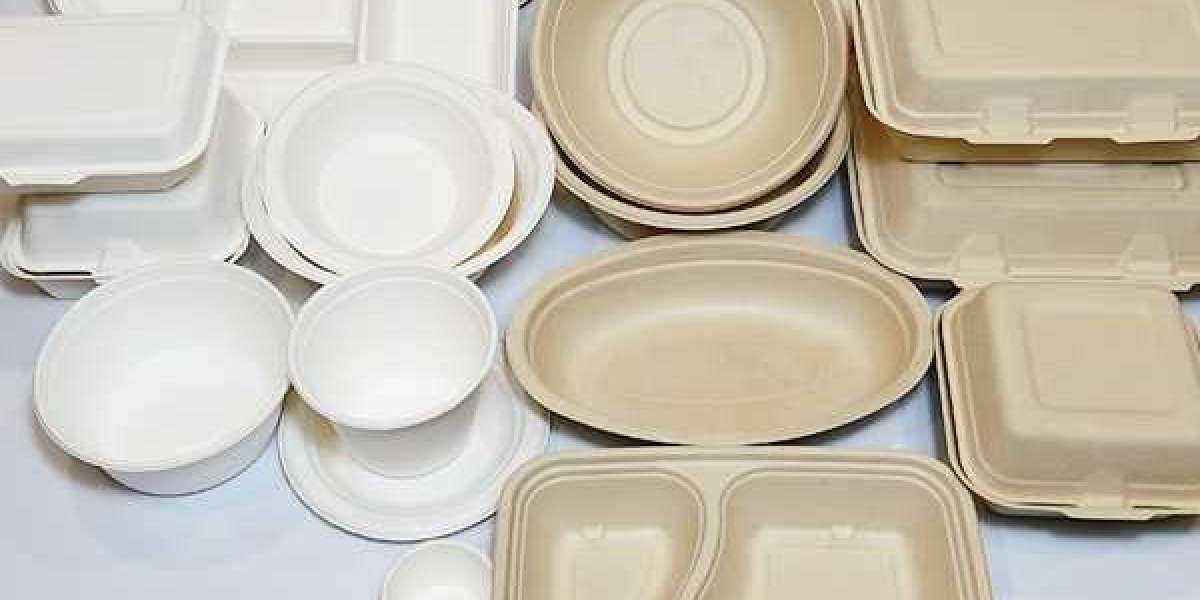Sugarcane bagasse, the fibrous byproduct left after juice extraction, has emerged as a sustainable alternative in the production of eco-friendly products. With environmental concerns driving innovation, bagasse is proving to be a game-changer in reducing reliance on plastics and other non-biodegradable materials. This article explores the process of creating eco-friendly products from sugarcane bagasse, its benefits, and how manufacturers are using this material to promote sustainability.
What is Sugarcane Bagasse?
Sugarcane bagasse consists of the plant fibers left behind after sugar extraction. Traditionally considered waste, it has gained value as a renewable resource in creating biodegradable products. Its lightweight, durable, and compostable properties make it suitable for numerous applications, ranging from tableware to packaging materials.
Advantages of Using Sugarcane Bagasse
1. Environmental Benefits
- Biodegradability: Unlike plastics, bagasse breaks down into natural components without leaving harmful residues.
- Carbon Footprint Reduction: Utilizing a waste product reduces the need for virgin raw materials, contributing to lower emissions.
2. Versatile Applications
- Bagasse can be molded into various shapes and forms, making it an ideal material for products like plates, bowls, and containers.
- It also serves as an excellent raw material for paper and bioenergy production.
3. Economic Value
- Transforming sugarcane bagasse into products offers farmers and industries an additional revenue stream.
- Manufacturers, such as bagasse plates manufacturers, are meeting the growing demand for sustainable alternatives, tapping into expanding markets worldwide.
Steps to Create Eco-Friendly Products from Bagasse
The production process of sugarcane bagasse products involves several steps, each tailored to ensure efficiency and sustainability.
1. Collection and Preparation
The journey begins with the collection of bagasse from sugar mills. It is washed and cleaned to remove any impurities, such as soil or debris, ensuring a pure raw material for processing.
2. Pulping
Bagasse is processed into a slurry-like pulp by mixing it with water. This process breaks down the fibers, preparing them for molding or conversion into specific products.
3. Molding and Shaping
Using heat and pressure, the bagasse pulp is molded into the desired shapes, such as plates, cups, or containers. Advanced techniques enable precise designs, making the products suitable for food-grade use.
- Manufacturers like bagasse tableware manufacturers often use specialized molds to meet diverse market needs.
- The molded items are then dried to eliminate excess moisture.
4. Sterilization
To ensure the products are safe for food contact, they are sterilized at high temperatures. This step also enhances durability and extends the shelf life of the items.
5. Quality Testing and Packaging
Every product undergoes quality testing to meet industry standards. Once approved, they are packaged using eco-friendly materials, further emphasizing the commitment to sustainability.
Applications of Sugarcane Bagasse Products
1. Food Packaging
Bagasse products are widely used in the food industry for packaging. Plates, bowls, and takeout containers made from bagasse are durable, heat-resistant, and biodegradable, making them ideal for replacing plastic packaging.
2. Agricultural Uses
Bagasse pulp can also be utilized in creating biodegradable planting pots or trays. These pots decompose naturally, enriching the soil with organic matter.
3. Disposable Tableware
As the demand for disposable, eco-friendly items grows, bagasse products manufacturers are focusing on creating stylish and practical tableware. These products are popular in restaurants, catering services, and events.
4. Industrial Applications
Bagasse also finds use in the production of fiberboards, insulation panels, and other construction materials, highlighting its versatility beyond consumer goods.
Benefits for Manufacturers
For businesses looking to invest in sugarcane bagasse products, the benefits are immense:
- Market Expansion: As consumers prioritize sustainability, the market for bagasse products is growing exponentially. Companies such as sugarcane bagasse products manufacturers are leveraging this trend to achieve competitive advantages.
- Cost Efficiency: Using bagasse as a raw material minimizes waste and reduces production costs compared to other eco-friendly alternatives.
- Compliance with Regulations: Many governments are implementing policies to ban plastics. Manufacturing bagasse-based products ensures compliance with these regulations, opening up opportunities in regulated markets.
Challenges in Bagasse Product Manufacturing
While promising, the production of bagasse products does come with its challenges:
- High Initial Investment: Setting up bagasse processing facilities requires significant capital for machinery and infrastructure.
- Limited Awareness: Many consumers and businesses are still unaware of the benefits of bagasse products, limiting widespread adoption.
- Supply Chain Issues: Consistent access to raw bagasse depends on the sugar industry, making production volumes subject to fluctuations.
Efforts by industry leaders, including bagasse products manufacturers, focus on overcoming these obstacles through innovation, education, and partnerships.
Future of Sugarcane Bagasse Products
The future of sugarcane bagasse products is bright, driven by consumer demand for sustainability and innovation in eco-friendly materials. Key trends include:
- Technological Advancements: New methods for processing bagasse are improving efficiency and broadening its applications.
- Policy Support: Governments worldwide are providing incentives to promote biodegradable alternatives, encouraging the growth of industries like bagasse tableware manufacturers.
- Increased Awareness: Public campaigns and education are making more consumers conscious of eco-friendly options, boosting demand for bagasse products.
Conclusion
Creating eco-friendly products from sugarcane bagasse is a practical and sustainable solution to the global plastic crisis. The process involves leveraging this agricultural byproduct to produce versatile, biodegradable, and durable items. Companies like bagasse plates manufacturers and others in the sector are at the forefront of this transformation, offering innovative products that align with modern environmental goals.
Despite challenges, the potential of bagasse in reshaping industries and contributing to a greener future is undeniable. As technology advances and awareness grows, sugarcane bagasse products are poised to become staples in eco-friendly manufacturing, marking a significant step toward a more sustainable world.








